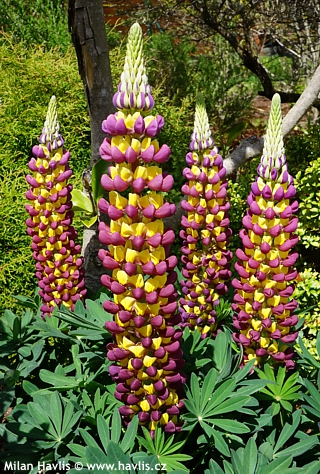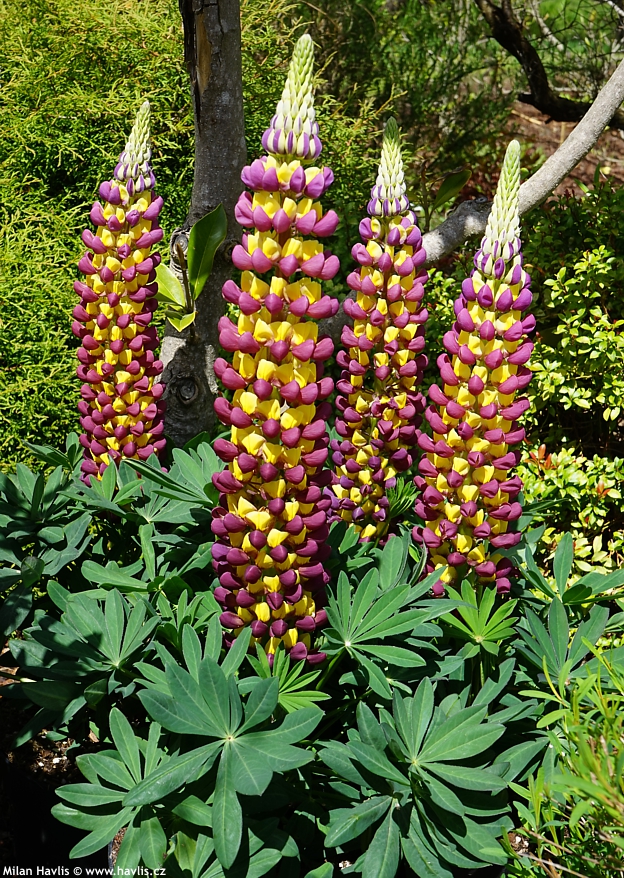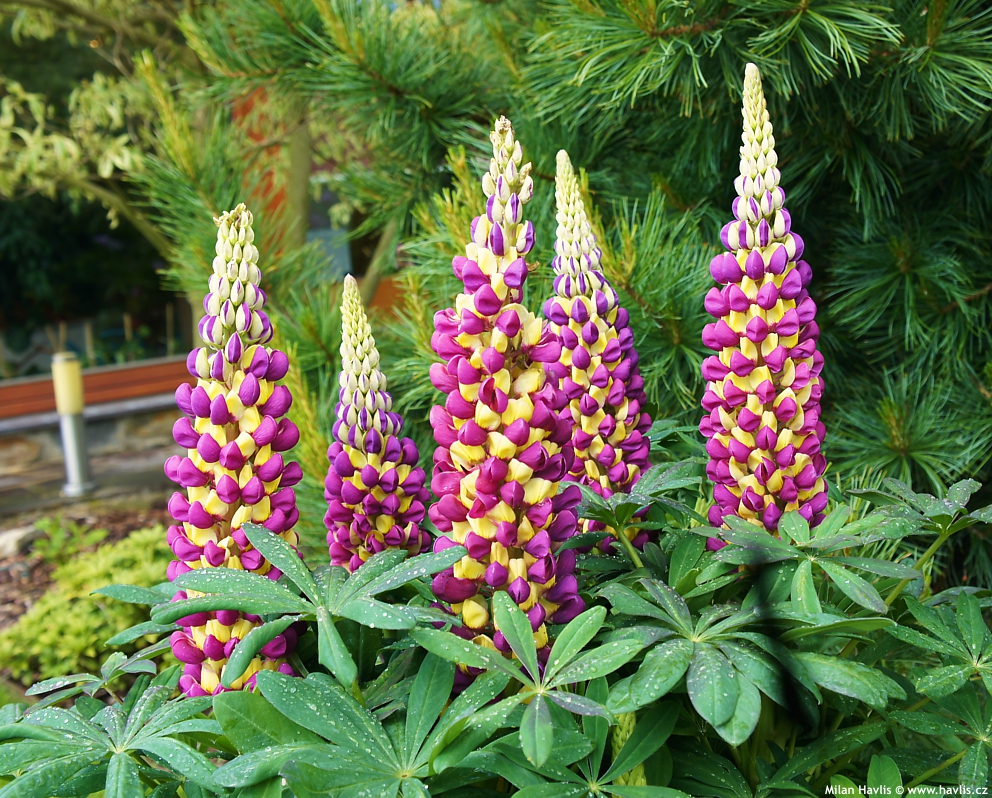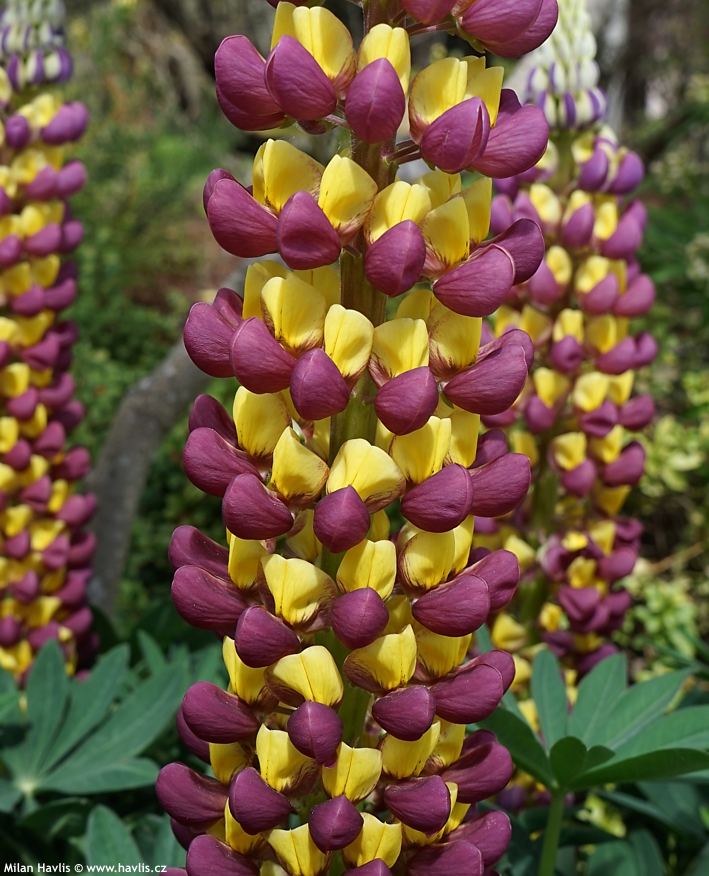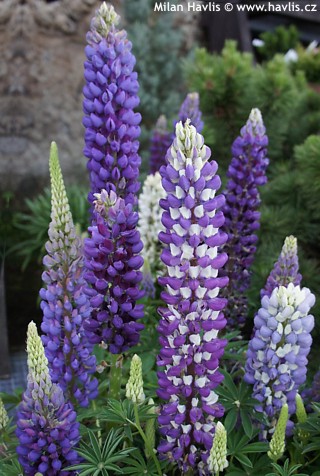Lupinus WEST COUNTRY™ 'MANHATTAN LIGHTS' lupines


Lupinus
Lupines are the inevitable item of English gardens as well as Czech woodlands. They come from North America and naturally grow in sunny locations of moist woodland edges and rocky slopes where their roots establish well in crevices that never lack moisture but are well draining. Deciduous, palmate leaves are deep green and very attractive as they are finely divided.Lupines like free draining soil that retains moisture and is preferably acidic. They can fix nitrogen from the atmosphere and distribute it through their roots. This is why they are often used as pioneer plants in poor soils. Beware of slugs which can devastate both your seedlings as well as old clumps. The flowering spikes are sturdy but fleshy and should be planted where they can be protected from the extreme wind blasts that could bend or break them. Unlike sweet-lupines whose seeds are edible, ornamental lupines (bitter-lupines) can be harmful if eaten. These plants are short-lived and should be dug out in the spring every 3-5 years, woody parts removed, and new plants put pack to encourage fresh growth. Hardy to about -34°C.
Last update 15-09-2014
Goods are shipped all over Europe. For Russia and U.K. and for further details please read about SHIPPING OPTIONS HERE.
Are you interested in a serious discount for orders NOV-FEB? Check your options here.
THE PRICES INCLUDE VAT of 15%. For quick conversion you can use 1 CZK = approx. 0.04 EUR
- STANDARD QUALITY - Plants of this group are 1st class quality with number of branches and overall density adequate to their size and age, considering they were container grown.
- DE LUXE QUALITY - This label guarantees a luxurious quality of manually selected plants that, compared to their height and age, are exceptionally dense and beautiful.
- EXTRA - These plants are usually mature and bigger specimens with exceptional overall appearance.
- STANDARD (as described in the plant form) means a tree with a trunk of 190-210 cm and a crown at the top, unless specified differently. The commercial size for trees is their girth measured in the height of 1m from ground.
- HOBBY - These plants are of the same quality as our standard-quality plants but younger and therefore cheaper.
- SHRUB - a woody plant with branches growing bushy from the ground level.
- HALF-STANDARD or MINI-STANDARD - a small tree with shorter trunk, its size is usually specified.
- FEATHERED - These are trees with branches growing already from the base of the trunk and up along the stem.
- GRASSES and PERENNIALS - Sizes given usually read the diameter of the pot or the clump, as specified.












